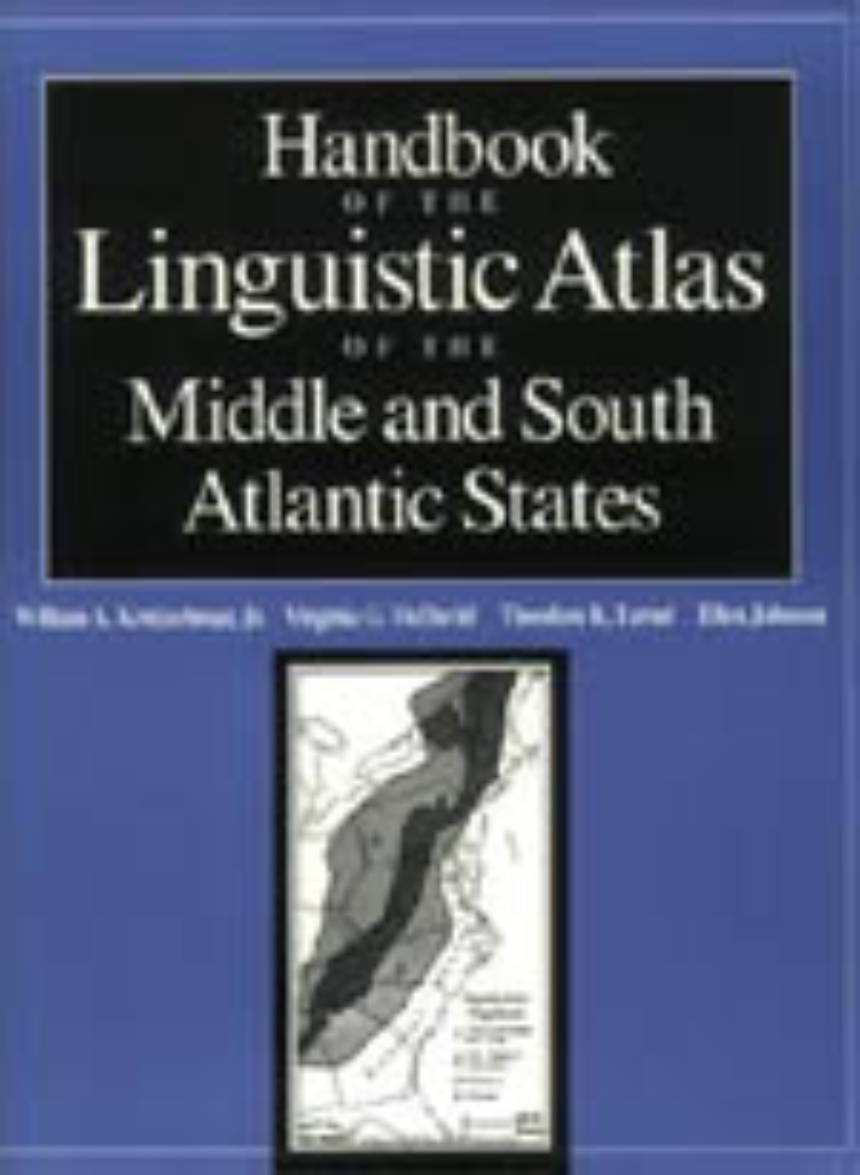Handbook of the Linguistic Atlas of the Middle and South Atlantic States
9780226452838
9780226452821
Handbook of the Linguistic Atlas of the Middle and South Atlantic States
Who uses "skeeter hawk," "snake doctor," and "dragonfly" to refer to the same insect? Who says "gum band" instead of "rubber band"? The answers can be found in the Linguistic Atlas of the Middle and South Atlantic States (LAMSAS), the largest single survey of regional and social differences in spoken American English. It covers the region from New York state to northern Florida and from the coastline to the borders of Ohio and Kentucky. Through interviews with nearly twelve hundred people conducted during the 1930s and 1940s, the LAMSAS mapped regional variations in vocabulary, grammar, and pronunciation at a time when population movements were more limited than they are today, thus providing a unique look at the correspondence of language and settlement patterns.
This handbook is an essential guide to the LAMSAS project, laying out its history and describing its scope and methodology. In addition, the handbook reveals biographical information about the informants and social histories of the communities in which they lived, including primary settlement areas of the original colonies. Dialectologists will rely on it for understanding the LAMSAS, and historians will find it valuable for its original historical research.
Since much of the LAMSAS questionnaire concerns rural terms, the data collected from the interviews can pinpoint such language differences as those between areas of plantation and small-farm agriculture. For example, LAMSAS reveals that two waves of settlement through the Appalachians created two distinct speech types. Settlers coming into Georgia and other parts of the Upper South through the Shenandoah Valley and on to the western side of the mountain range had a Pennsylvania-influenced dialect, and were typically small farmers. Those who settled the Deep South in the rich lowlands and plateaus tended to be plantation farmers from Virginia and the Carolinas who retained the vocabulary and speech patterns of coastal areas.
With these revealing findings, the LAMSAS represents a benchmark study of the English language, and this handbook is an indispensable guide to its riches.
This handbook is an essential guide to the LAMSAS project, laying out its history and describing its scope and methodology. In addition, the handbook reveals biographical information about the informants and social histories of the communities in which they lived, including primary settlement areas of the original colonies. Dialectologists will rely on it for understanding the LAMSAS, and historians will find it valuable for its original historical research.
Since much of the LAMSAS questionnaire concerns rural terms, the data collected from the interviews can pinpoint such language differences as those between areas of plantation and small-farm agriculture. For example, LAMSAS reveals that two waves of settlement through the Appalachians created two distinct speech types. Settlers coming into Georgia and other parts of the Upper South through the Shenandoah Valley and on to the western side of the mountain range had a Pennsylvania-influenced dialect, and were typically small farmers. Those who settled the Deep South in the rich lowlands and plateaus tended to be plantation farmers from Virginia and the Carolinas who retained the vocabulary and speech patterns of coastal areas.
With these revealing findings, the LAMSAS represents a benchmark study of the English language, and this handbook is an indispensable guide to its riches.
470 pages | 20 maps | 8-1/2 x 11 | © 1993
Language and Linguistics: Anthropological/Sociological Aspects of Language, Language Studies
Table of Contents
List of Figures
Preface
Works Cited
1. History and Nature of the Project
2. Selection of Communities and Informants
Original Plans and Practices
Reconsideration of Communities and Informants for Computer Processing
The LAMSAS Sample
3. Tables of Informants and Communities
Table of Informants
Table of Communities
4. Work Sheets and Collection of Information
Hans Kurath’s Directions for Field Work
Work Sheet Tables
Work Sheets by Topic
Work Sheets by Headword
Work Sheets by Work Sheet Number
Work Sheets by List Manuscript Number
5. Phonetics and Field Worker Practices
Vowels and Diphthongs
Consonants
Accentuation
Intonation
Word Division
Field Workers
6. Field Records, List Manuscripts, and Initial Editing
Labels and Other Symbols
Substitution Symbols
Reconciliation of Phonetic Practices in List Manuscripts
7. LAMSAS Computerization
LAMSAS Computer Phonetics
Database and File Structure
Data Entry and Proofreading
8. Dialects of the LAMSAS Region, by Raven I. McDavid, Jr.
9. Settlement History
10. Community Sketches and Informant Biographies
List of Abbreviations
New York
New Jersey
Pennsylvania
West Virginia
Delaware
Maryland
District of Columbia
Virginia
North Carolina
South Carolina
Georgia
Florida
Preface
Works Cited
1. History and Nature of the Project
2. Selection of Communities and Informants
Original Plans and Practices
Reconsideration of Communities and Informants for Computer Processing
The LAMSAS Sample
3. Tables of Informants and Communities
Table of Informants
Table of Communities
4. Work Sheets and Collection of Information
Hans Kurath’s Directions for Field Work
Work Sheet Tables
Work Sheets by Topic
Work Sheets by Headword
Work Sheets by Work Sheet Number
Work Sheets by List Manuscript Number
5. Phonetics and Field Worker Practices
Vowels and Diphthongs
Consonants
Accentuation
Intonation
Word Division
Field Workers
6. Field Records, List Manuscripts, and Initial Editing
Labels and Other Symbols
Substitution Symbols
Reconciliation of Phonetic Practices in List Manuscripts
7. LAMSAS Computerization
LAMSAS Computer Phonetics
Database and File Structure
Data Entry and Proofreading
8. Dialects of the LAMSAS Region, by Raven I. McDavid, Jr.
9. Settlement History
10. Community Sketches and Informant Biographies
List of Abbreviations
New York
New Jersey
Pennsylvania
West Virginia
Delaware
Maryland
District of Columbia
Virginia
North Carolina
South Carolina
Georgia
Florida
